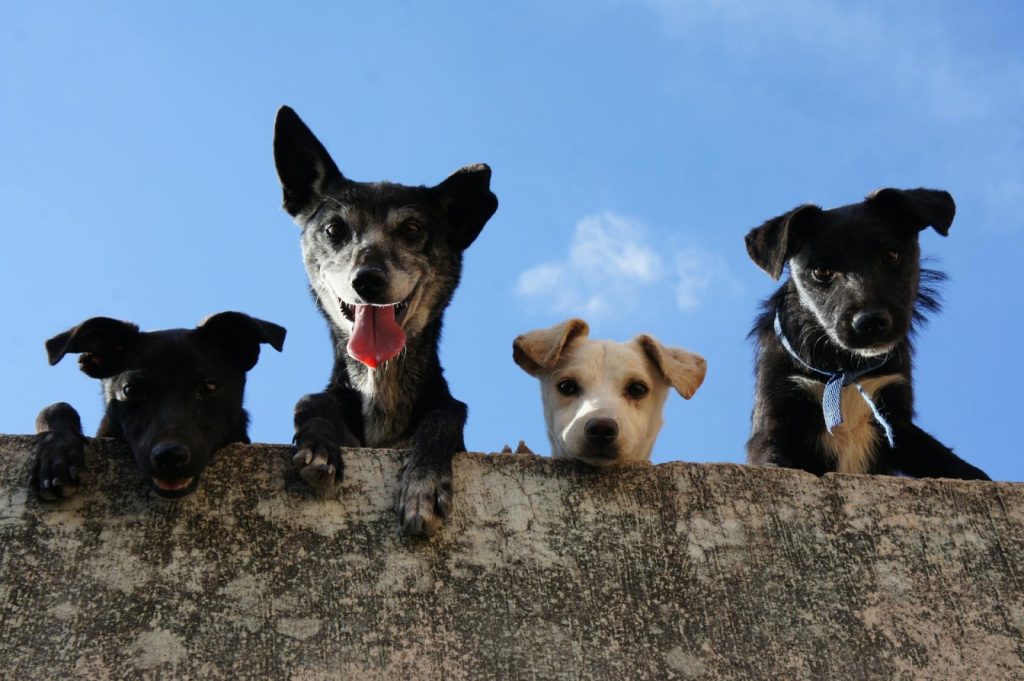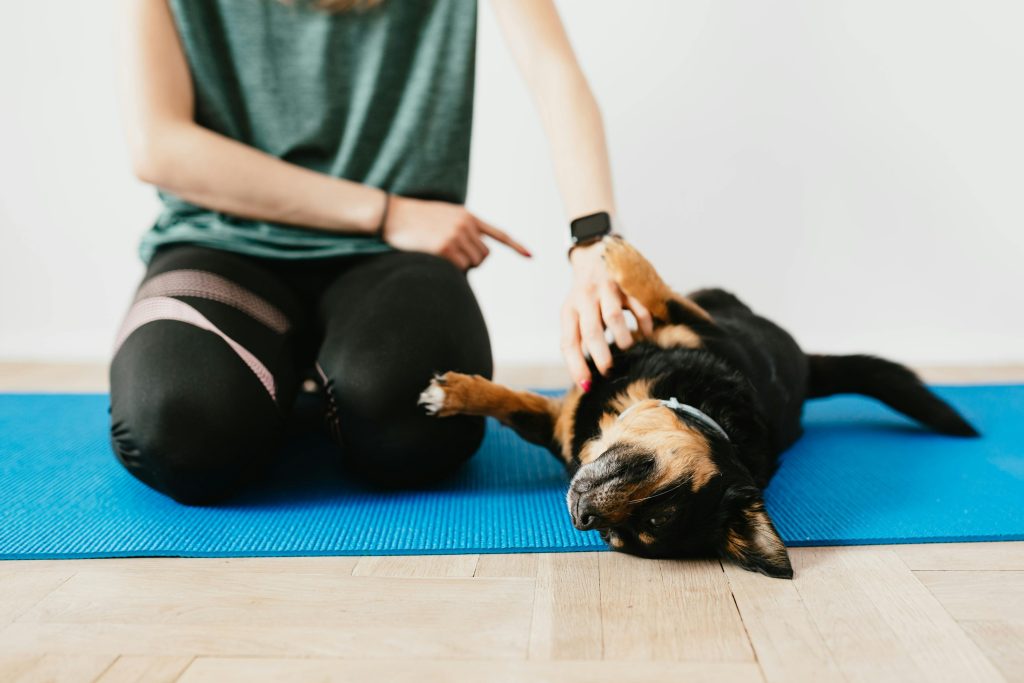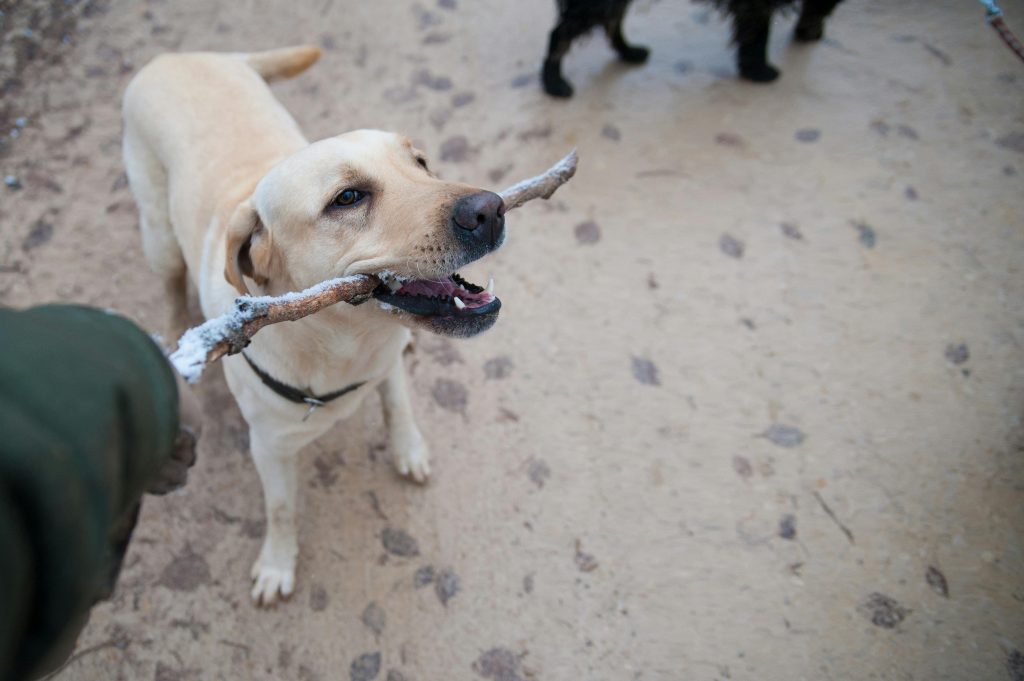
From the first exuberant puppy nibble on our fingers through years of companionship, dogs hold an undeniably special place in our hearts. Yet that playful, affectionate furry friend was once a wild wolf-like ancestor not inclined to seek human bonds. Through selective breeding and environmental expo sure, canines adapted over generations to understand our gestures, emotions, and training requests in ways no other species can match. This opens incredible opportunities for interspecies communication and activities should we put in the necessary work. The journey starts from the moment we welcome a bubbly 8-week-old pup into our homes, bursting with potential. How skillfully we nurture dogs during impressionable development shapes their future behavior and the success of our relationships enormously.
The basic premise seems simple enough. Feed, housetrain, and socialize young pups adequately while discouraging undesirable habits using corrections, right? Unfortunately, this style of basing dog training on human convenience often backfires through confusion, fear, and damaged trust. Dogs think differently than people. We must view the world through our puppy’s eyes to understand their instincts, capacities, emotional triggers, and learning style. Modern behavioral science shows dogs best learn through motivation, not force. Building an unshakable bond and developing self-control happens through positive experiences.
With realistic expectations for normal developmental phases, ample patience, and a training outlook focused on setting our puppies up for success rather than scolding perceived misbehavior, even notoriously “stubborn” breeds blossom into model canine citizens given time. This guide collects essential modern puppy-raising strategies rooted in positive reinforcement, gratitude for dogs’ unique nature, and practical prevention-focused solutions to steer undesirable but normal puppy antics in more constructive directions. Puppies can seem like fur-covered chaos engines at times, but in fact, their behavior follows predictable patterns. Understanding what drives common puppy hijinks allows us to proactively manage and train without resorting to outdated and psychologically damaging reprimands like alpha rolls or prong collars.
Integrating lifestyle adjustments and science-backed force-free techniques creates coinage-to-please pups whose lifelong behavior trends halo the countless hours invested in raising them thoughtfully. Whether welcoming your first puppy or expanding a multi-dog home, the pages ahead supply a complete roadmap to set your tail-wager up to thrive. Destiny is never set in stone; conscientious early nurturing molds even genetically “doomed” pups into trustworthy companions. Let’s begin this wonderful journey together!
Understanding Puppy Behavior
Puppyhood is an incredibly formative time in a dog’s life. The experiences and training a puppy receives during their first year will shape their behavior and personality for years to come. While puppies are naturally exuberant, playful, and even mischievous at times, certain common puppy behaviors can become problematic if left unchecked. How-ever, when properly understood, these behaviors can be gently reshaped or redirected through positive, reward-based training. This chapter will provide an in-depth overview of some of the most common natural puppy behaviors that owners may find challenging or concerning if not addressed properly. First, we will explore the natural instincts and tendencies that drive many normal puppy behaviors. Then, we will examine some of the most common potentially problematic puppy behaviors like nip-ping, biting, barking, jumping, and more. For each behavior, we will analyze why puppies exhibit these actions based on their instincts and normal developmental stages.
Natural Instincts and Behaviors
Puppies have a complex mix of natural instincts and tendencies inherited from their wild wolf ancestors. Many behaviors that owners find irritating or problematic are simply normal expressions of these natural instincts in a domestic environment. By understanding the biological drives and evolutionary functions behind certain puppy behaviors, owners can address them more effectively through thoughtful, positive training.
High Energy Levels

Puppies have an innate need to expend abundant energy through play and activity. wild wolf cubs spend hours romping, wrestling, and practicing survival skills through play. This high energy level is still very strong in domestic puppies. Without sufficient outlets, their pent-up energy can lead to behaviors like chewing, digging, barking, hyperactivity, and rough play. Providing adequate physical and mental exercise is key to mitigating problematic behaviors caused by over exuberance. Interactive games and reward-based training activities can help meet puppies’ high exercise needs while also teaching good manners.
Oral Fixation
Wild wolf cubs use their mouths constantly -to play with littermates, sample their environment, transport objects, and interact with their pack. This natural oral fixation remains common in puppies. It can lead to mouthing, nipping, and play biting, and destructive chewing of inappropriate items if not properly redirected. Providing safe, stimulating chew toys while discouraging biting and misshaping satisfies puppies’ innate need to use their mouths constructively.
Socialization Needs
Wolves are highly social, living in close-knit family packs. Puppies retain a strong drive to socialize with their human and animal families. Insufficient socialization in the first few months can lead to fearful or aggressive reactions to strangers or unfamiliar situations later on. Introducing puppies to many people, dogs, environments, and stimuli in a positive way is crucial to raising sociable, confident dogs.
Pack Bonding
Wolves form extremely close bonds with their family pack. Puppies are hardwired to form tight attachments to their human families. Disruption of this bonding through isolation, rejection, or insufficient contact can lead to anxiety, destructive behaviors, and reactivity from distress. Prioritizing secure attachment through affection, play, and appreciation helps make puppies feel safe and secure.
Investigative Nature
High curiosity and eagerness to investigate are inborn traits for exploring new environments and learning about stimuli. When unable to satisfy this need in healthy ways, puppies may get into mischief or danger. Providing safe spaces and objects for puppies to explore satisfies their inquisitive natures while protecting them. Interactive toys and forming positive associations with novel items and places also allow puppies to learn about their surroundings in a constructive manner.
Teething Discomfort
The natural process of teething, typically starting around 12 weeks old, causes significant pain and discomfort as the puppy’s baby teeth push through the gums and are eventually replaced by adult teeth. Chewing and mouthing behaviors often increase due to teething distress. Providing plenty of safe, cold chew toys combined with praise for chewing appropriate items gives puppies much-needed relief while redirecting any excessive or unwanted mouthing onto acceptable outlets.
Independence Vs Companionship
As puppies grow, they naturally start testing their independence and leadership potential while still needing reassurance and com-canonship. This dichotomy can manifest in behaviors like ignoring commands, resisting training, or attention-seeking behaviors. Owners should provide leadership with firm kindness, be consistent with training, and give puppies appropriate independence balanced with Quality Company and playtime. This fulfills puppies’ multifaceted social needs.
Instinct to Guard Valued
Resources In the wild, wolves must protect their food, territory, pack members, and valued items from competition. This instinct remains strong in many puppies and can lead to possessive behaviors like resource-guarding toys, food bowls, or resting areas. Owners should never reprimand or punish puppies for this instinct. Instead, they can use re-ward-based training to teach puppies to willingly relinquish items in exchange for high-value treats.
Hardwired Communication Styles
Like wolves, puppies use certain vocalizations, body language, and behaviors to communicate with their pack. For example, growling or barking often signals that a puppy is feeling threatened, afraid, excited, or asserting dominance. Owners should never punish puppies for natural forms of canine communication but instead, address the underlying emotional causes through counterconditioning and desensitization.
Hierarchy and Rule Testing
Wolves have innate tendencies to explore their place in the family hierarchy and test boundaries set by their pack leader. Puppies will naturally probe to see what actions they can get away with, especially if owners set unclear rules or unintentionally reinforce misbehavior. Setting reasonable rules and structure from the start with positive training helps satisfy puppies’ need to understand their place in the family pack.
Common Puppy Misbehaviors and Why They Occur
Puppies, with their playful exuberance and lack of manners, frequently engage in behaviors that owners may find irritating or un-acceptable. However, these common puppy misdeeds are usually driven by normal developmental factors, natural instincts, lack of training, or insufficient outlets for needs like exercise and chewing. While preventing undesirable behaviors through proper management and training is important, owners should also have realistic expectations for normal puppy behavior. With insight into why puppies misbehave and proactive, positive training methods, most puppy behavior issues can be resolved, and long-term problems can be prevented.
House Training Accidents

Accidents involving urination or defecation in inappropriate household locations are extremely common in puppies up to 6 months of age as their bladder and bowel control is still developing. Unneutered male puppies may also begin marking indoor areas with urine due to emerging hormonal urges before they fully understand house training rules. Insufficient supervision, confinement, and untimely opportunities to eliminate outdoors make indoor accidents more likely to occur. Patience, vigilance, and consistent positive reinforcement of desired elimination habits will resolve most puppy house training issues over time as the puppy gains physical and mental control. It is also important not to punish or scold puppies for indoor accidents, as this can actually reinforce the behavior by creating a negative association with going potty in front of the owner. Puppies under 6 months have very limited capacity to voluntarily control elimination due to immature muscle development. Frequent accidents in the house, especially immediately after eating, drinking, playing, or napping, are unavoidable at first.
Limiting access through confinement, taking puppies out on a strict schedule, and always rewarding potties outdoors is key during the house-training process. Between 4 and 6 months, bladder and bowel maturity improve dramatically in most puppies. However, until at least 6 months old, puppies should not be left unsupervised loose in the home for prolonged periods to prevent accidents. For male puppies, hormonal urges to mark surfaces often emerge around 6 months before full house training has been achieved. Neutering can help reduce this behavior if done prior to sexual maturity. Some puppies may not be fully reliable until up to a year old, so patience and management are still required.
Nipping and Mouthing
Puppies have an innate urge to bite and mouth using their sharp baby teeth and developing jaws. This behavior is normal canine play and exploration. However, puppies often direct nipping, mouthing, and even hard bites toward owners’ hands, arms, clothing, and ankles. This is especially common during teething starting around 12 weeks of age, as the discomfort and urge to chew intensifies when adult teeth begin pushing through the gums. Though not typically intended to cause harm, puppy biting and mouthing are undesirable and unacceptable behaviors that owners should immediately start addressing through positive training. The tendency to nip and bite originates from early play behavior with littermates. Puppies do not instinctively understand that human skin is much more delicate than a fellow puppy’s furry coat and thick hide. Therefore, they often apply uncomfortably hard pressure when mouthing human skin and ap-pendages. Additionally, because humans are prone to react with vocal exclamations or movements when nipped, this can actually encourage biting as a game. Chewing and biting feel good on tender gums and emerging teeth, providing relief. Puppies lacking appropriate outlets like chew toys are likely to transfer their need for this relief onto nearby human limbs. While completely natural puppy behaviors, nipping and biting need immediate redirection to prevent escalation into a more hazardous problem as the puppy grows up.
Rough Play and Hyperactivity

Puppies are famously energetic, ramping up to play with speed and zeal that can seem almost frenzied at times. Rough, rambunctious play is another common puppy behavior tendency, especially in certain energetic breeds. Play-motivated behaviors like nip-ping, jumping up, chasing hands, grabbing clothing, and bowling owners over can seem almost aggressive in their intensity. How-ever, for puppies, this is simply energetic, unstructured play without an understanding of their size and strength relative to humans.
Some puppies also exhibit hyperactive behavior, racing and tearing around with boundless energy. Rough and hyperactive play stems from normal high energy levels, play drive, and developmental needs in young puppies combined with insufficient outlets for these urges. Puppies have an instinctive need to play daily for long durations preferably with other puppies or dogs to learn bite inhibition and social skills. Without appropriate play time involving plenty of running and wrestling, their pent-up energy overflows. If owners encourage rambunctious games of chase and allow puppies to continue nippy, jumpy play, this also fuels the behavior by rewarding it. Starting impulse control and structured obedience training early provides constructive mental and physical exercise for high-energy puppies.
Destructive Chewing
Destruction of household objects through chewing is an extremely common issue with puppies up to a year old, especially when teething ramps up chewing urges between four and six months of age. Leather, wood, plastic, drywall, shoes, electronics cords, fur-niture, carpet, and more are all at risk for serious damage from determined puppy chewing unless items are kept securely out of reach.
Puppies chew for multiple reasons. Teething discomfort creates an overwhelming need to chomp and gnaw for relief. Boredom and separation anxiety can also spark destructive chewing, with the home’s contents becoming the helpless victims. Puppies naturally investigate objects by mouthing them, so anything within reach provides temptation. Even well-trained adult dogs may gnaw and ingest dangerous items when left alone for too long. Managing a puppy’s environment by providing plenty of appealing, safe chew toys while restricting access to vulnerable household articles is essential to curbing destruction. Owners should also make liberal use of confinement in puppy-proofed spaces when supervision is not possible.
Jumping Up
Jumping upward on people, furniture, and other items is a very common yet often problematic and hazardous puppy behavior. The desire to jump up stems from natural canine greeting behaviors and playful exuberance. Puppies, especially in larger and more athletic breeds, derive great enjoyment from launching themselves upward. However, as puppies grow, their increasing size and strength can make this problematic. Homeowners also understandably object to mud-caked paw prints on clothes or scratches and bruises from clumsy puppy scrambling. Teaching and rewarding a solid “Off” cue are effective for deterring jumping behavior. Giving an alternate behavior cue like “Sit” also helps refocus the puppy’s exuberance in a more appropriate, controlled direction. Puppies should never be punished for jumping, as this can often exacerbate the behavior by triggering the puppy to jump higher or more persistently. Providing ample outlets for play drive through active exercise and games reduces the puppy’s motivation to express energy through undesirable vertical leaping.
Begging and Stealing
Food a universal behavior tendency among puppies involves begging insistently for food at the dinner table and stealing unattended human food. Such problematic food nuisance behaviors arise naturally from the puppy’s survival-based drive to opportunistically secure calories combined with a lack of training. The most effective prevention is establishing solid “Leave It” and “Sit” behavioral cues starting early in puppyhood, rewarding obedience and self-control. How-ever, even well-trained adult dogs may sneak food if sufficiently tempted and human supervision is inadequate. Owners should also minimize the puppy’s access to tempting food items when unsupervised through careful management, like keeping counters clear, lids on trash cans, and high-value items out of reach. Though easier said than done, everyone in the household must remain vigilant to avoid inadvertently rewarding begging or food theft by tossing a scrap to a pleading puppy. Otherwise, this quickly becomes an ingrained and highly self-reinforcing behavior pattern that is extremely challenging to reverse.
Barking for Attention
Frequent and insistent vocal demands for attention, treats, or playtime are common puppy misbehavior, most often occurring when confined, left alone, or otherwise prevented from accessing desired outlets like humans, toys, or food. Puppies naturally learn to employ loud, penetrating barks and howls to achieve their goals, summon their pack, or self-soothe anxiety from isolation. Well-meaning but unwise owners often inadvertently reinforce attention-seeking barking by responding with contact, scolding, or treats to quiet the puppy. This quickly spirals into an ingrained habit as puppies learn that barking earns rewards.

